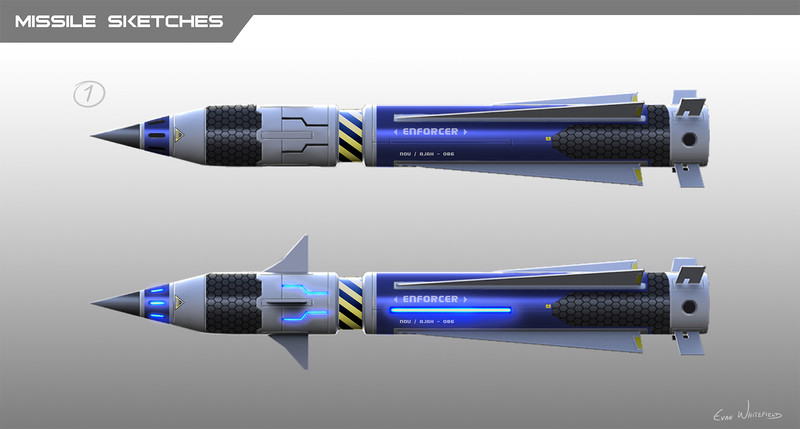GDI CEO


OUT OF CHARACTER INFORMATION
- Intent: To create a highly precise tactical missile system for use against heavily armored targets.
- Image Source: Image Source
- Canon Link: N/A
- Permissions: N/A
- Primary Source: N/A
PRODUCTION INFORMATION
- Manufacturer: GDI Incorporated
- Affiliation: GDI Incorporated
- Market Status: Closed-Market | Guardian Defense Industries Inc.
- Model: TM-ST200 “Stänger” Missile System
- Modularity: N/A
- Production: Limited
- Material:
- Fiberplast Casing
- Phrik Machine-Sharpened Tip
- EMP Charge
- Missile Components
TECHNICAL SPECIFICATIONS
- Classification: Armor Piercing EMP Missile
- Size: Average
- Weight: Average
- Explosive Type: EMP Burst
- Delivery Method: Self-propelled, tracking via targetting computer lock
- Effective Range: Battlefield
- Area Of Effect: Pinpoint
- Damage Output: Extreme
SPECIAL FEATURES
- Phrik Machine-Sharpened Tip: The ST200 Missile is a scalpel specifically designed with a select group of targets in mind, namely heavily armored vehicles. The specially crafted phrik tip is capable of penetrating very strong armor paneling, particularly if missiles possessing said tip are fired en-masse.
- Focused EMP Charge: Rather than being simply a “very sharp” self propelled anti armor round, the ST200 contains a highly focused and concentrated EMP charge within the internal casing of the missile. Upon impact, the charges burst is focused “forward” toward the tip of the missile. If impacting against shielding systems, this results in a destabilizing effect that, if done in masse, could disable shielding systems entirely from EMP overload. If the missile impacts against armor paneling, and if the phrik tip penetrates through the armor per its design intent, the directed EMP charge is sufficient to disable internal electrical and reactor systems, rendering the target craft inert and effectively “dead”. The charge’s size renders it effective in small quantities against fighter-craft or land vehicles such as main battle tanks, but said efficacy can translate to larger craft assuming larger volleys are utilized or if sentive systems are specifically targeted within said larger craft.
- Fiberplast Casing: Lightweight, and sleek in profile, the fiberplast casing of the ST200 renders it slightly harder to intercept as opposed to variants with more standardized casings, yet this comes with the drawback of the casing being slightly less durable than other more common materials.
STRENGTHS
- +Focused Emp Charge: (See special features)
- +Phrik Tipped: (See special features)
- +Fiberplast Casing: (See special features)
WEAKNESSES
- -Hyper Specialized: The ST200 Missile System is designed to do one thing very well, namely to disable heavily armored vehicles/craft with intricate electrical and/or power systems. Outside of that niche, it doesn’t offer any modularity to address situations requiring more explosive or overtly destructive ordinance.
- -Fiberplast Casing: (See special features)
- -Focused EMP Charge: As noted above, the EMP charge contained within this missile system is directed “forward” to the tip of the missile. This additionally means that Upon impact or destruction mid-flight, the EMP charge does not create a bubble or EMP energy or area of denial. The charge Is strictly focused on the target it is directed toward, be it deflector shielding or sensitive internal systems; nothing more and nothing less.
DESCRIPTION
Seeing a seeming hole in the industry for specialized “anti-armor” missile systems, GDI set about developing the missile system designated TM (tactical missile) ST200 under the oversight of Dr. Georg Stänger; who now serves as the namesake for the revolutionary missile system. Known affectionately among beta test users as the “Stinger”, the ST200 is highly effective at countering heavily armored threats whether they be airborne or ground based, without running the added risk of needless collateral damage.
With its razor-sharp phrik tip, the Stänger is designed to penetrate even the most heavy of armor paneling, which then triggers the internal EMP burst to detonate into the target. This burst possesses enough strength to disrupt the internal circuitry of most modern war machines, leaving the craft totally inert unless it can be subjected to lengthy (and costly) repairs. This weapon system is rising in popularity amongst more “ethical” military organizations such as the Galactic Alliance military, or simply those who see the benefit of quickly and effectively neutralizing heavier threats.
Of course, the ST200 is not without its flaws, as its use is severely reduced against vehicles devoid of electrical systems (which are rare, but not totally unheard of in this day and age), being reduced to little more than a guided armor piercing round in such circumstances. It is also not recommended for use on organic targets such as clusters of infantry (it could conceivably be used against groupings of droid targets, but this is not the primary role of the missile).
Overall, if you are in need of an anti-armor/vehicle solution for missile launchers, look no further than the ST-200, which offers the most “Stäng” for your buck!
Last edited:






